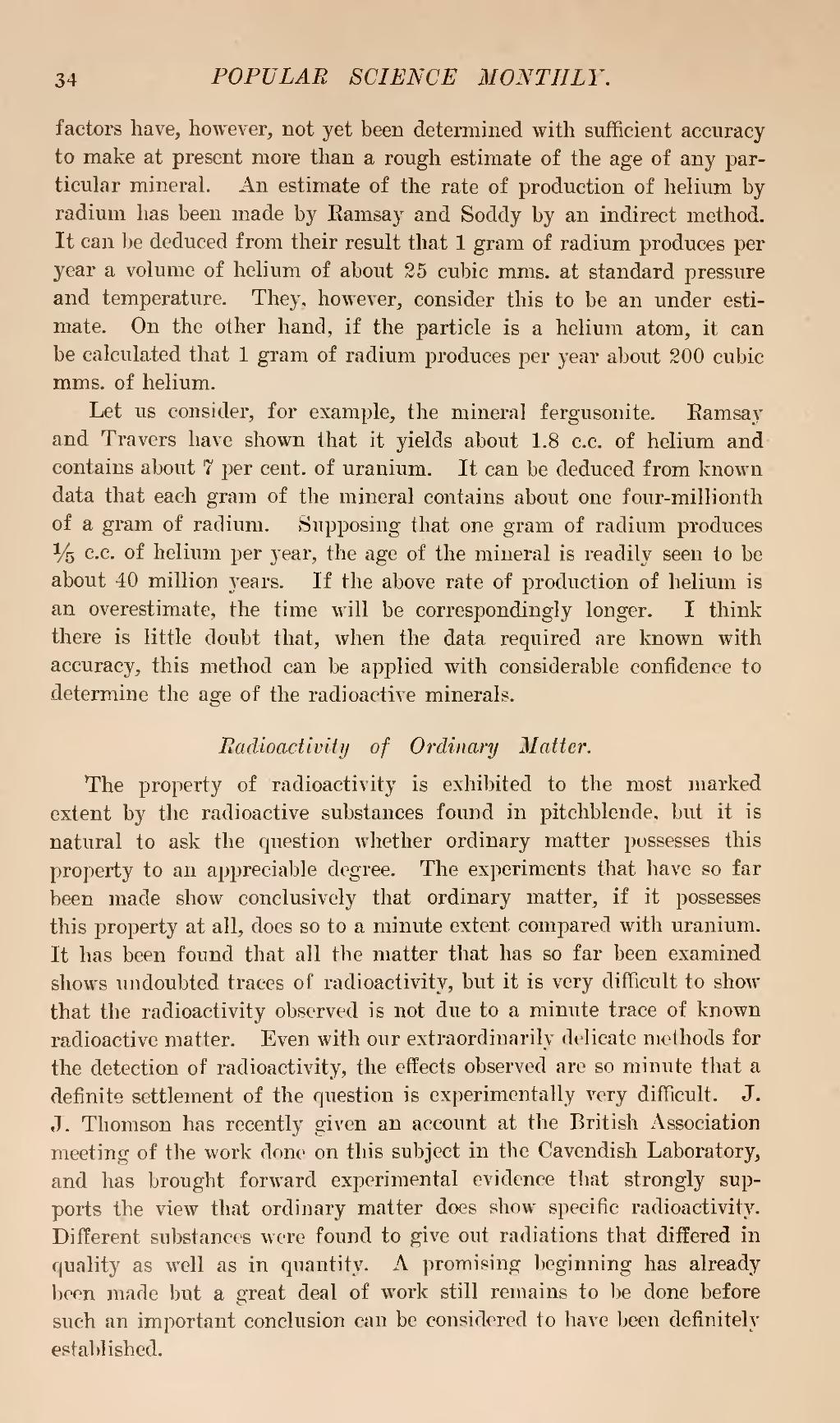factors have, however, not yet been determined with sufficient accuracy to make at present more than a rough estimate of the age of any particular mineral. An estimate of the rate of production of helium by radium has been made by Ramsay and Soddy by an indirect method. It can be deduced from their result that 1 gram of radium produces per year a volume of helium of about 25 cubic mms. at standard pressure and temperature. They, however, consider this to be an under estimate. On the other hand, if the particle is a helium atom, it can be calculated that 1 gram of radium produces per year about 200 cubic mms. of helium.
Let us consider, for example, the mineral fergusonite. Ramsay and Travers have shown that it yields about 1.8 c.c. of helium and contains about 7 per cent, of uranium. It can be deduced from known data that each gram of the mineral contains about one four-millionth of a gram of radium. Supposing that one gram of radium produces 1⁄5 c.c. of helium per year, the age of the mineral is readily seen to be about 40 million years. If the above rate of production of helium is an overestimate, the time will be correspondingly longer. I think there is little doubt that, when the data required are known with accuracy, this method can be applied with considerable confidence to determine the age of the radioactive minerals.
Radioactivity of Ordinary Matter.
The property of radioactivity is exhibited to the most marked extent by the radioactive substances found in pitchblende, but it is natural to ask the question whether ordinary matter possesses this property to an appreciable degree. The experiments that have so far been made show conclusively that ordinary matter, if it possesses this property at all, does so to a minute extent compared with uranium. It has been found that all the matter that has so far been examined shows undoubted traces of radioactivity, but it is very difficult to show that the radioactivity observed is not due to a minute trace of known radioactive matter. Even with our extraordinarily delicate methods for the detection of radioactivity, the effects observed are so minute that a definite settlement of the question is experimentally very difficult. J. J. Thomson has recently given an account at the British Association meeting of the work done on this subject in the Cavendish Laboratory, and has brought forward experimental evidence that strongly supports the view that ordinary matter does show specific radioactivity. Different substances were found to give out radiations that differed in quality as well as in quantity. A promising beginning has already been made but a great deal of work still remains to be done before such an important conclusion can be considered to have been definitely established.
